Introduction
JAN provides this information as a way to share accommodation situations and solutions from manufacturing industry related jobs. For a more in depth discussion, contact JAN directly.
Situations and Solutions:

A forklift driver had difficulty grasping the steering wheel due to sensitivity from a bleeding disorder.
The forklift was fitted with a spinner ball to eliminate the need for grasping.
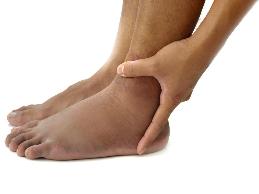
A quality inspector for a manufacturing company was experiencing painful swelling in her legs, ankles, and feet during pregnancy.
Her job required standing for long periods of time and she needed to be somewhat mobile. Her medical provider recommended that she take breaks to get off her feet. The employer provided a stand/lean stool to enable her to take pressure off her feet, as-needed, added anti-fatigue matting to her work area, and permitted the employee to rest with her feet up during breaks.
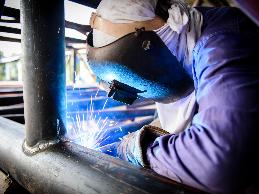
A welder with epilepsy wanted to make his work area safe when he had a seizure.
JAN suggested a welder's helmet with additional padding and using a safety switch on his welding machines.

A product technician with chemical sensitivity was having respiratory distress due to some of the chemicals used in the production process.
As a reasonable accommodation, the employer provided a face mask, ear plugs, lab coat, and gloves. These were already being used by another department. The employer reported that the employee can now deal with his medical condition while he’s on the job. The change has also saved workers’ compensation costs and improved workplace safety.

A production worker with an intellectual impairment and cerebral palsy had difficulty grasping a plastic bottle to accurately apply an adhesive label.
JAN suggested making a wooden jig, which secured the bottle, thus allowing the employee to use both hands when applying the label.

James is production worker with motor difficulties as a result of fetal alcohol syndrome.
He found it nearly impossible to stuff plastic bags with the required craft materials for each kit he assembled. His employer provided a small wooden box with a clip to hold the bag upright so James could assemble the complete kits more effectively.

An automobile parts assembler had hoped to regain strength in his dominant right side following a stroke resulting in hemiparesis.
He had exhausted FMLA leave and decided to request reassignment. He was placed in a vacant stock clerk position that was less physically demanding. He was also provided a scooter to access the facility and a tablet device was mounted to the handlebars, which allowed him to access purchasing and receiving documents with one hand.

An employer was considering hiring an employee with a severe hearing impairment to be a material handler.
The employer had some safety concerns and called JAN seeking accommodation ideas for working around forklift traffic and running machinery. JAN suggested the employer set paths of travel for forklifts and pedestrians, provide mirrors, require that all vehicles to stop at each intersection, install strobe lights on the equipment, ask the individual if he would feel comfortable wearing a bright colored vest or hard hat, and provide a personal vibrating pager to be activated by a coworker in dangerous situations. Cost not reported.
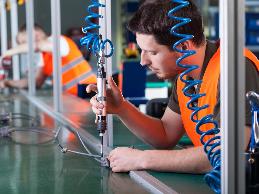
A new hire for an assembler position at a manufacturing plant was assigned to work on assembling small parts to a machine, although they had been hired to assemble large items.
Due to essential tremor the employee was unable to maintain quotas. The employer did not have an open position on the large item assembly line but did agree to provide vacuum pickup tools to aid the employee in assembling the smaller items until a position became available.

A machine operator with arthritis had difficulty turning control switches.
The small tabs were replaced with larger cushioned knobs and he was given gloves with non-slip dot gripping. These modifications enabled him to grasp and turn the knobs more effectively and with less force.
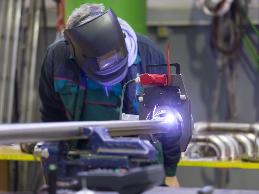
A machine operator was experiencing difficulties remembering the steps involved in changing a part on his machine.
The employer provided the employee with a step by-step checklist and directions explaining how to do this.
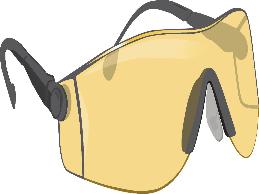
A machinist of short stature had trouble keeping his safety glasses on.
The employer noticed and had concerns for his safety. The employer called JAN and was able to receive a vendor list of manufacturers for safety glasses that fit adults with smaller faces. This enabled the employee to continue working while maintaining safety.

An employee at a manufacturing site had been successfully working the second shift with seasonal affective disorder (SAD).
He experienced fatigue and difficulty with concentration due to disruption of his sleep patterns and couldn’t work the early shift a new manager assigned him to. The employee was accommodated with the ability to remain on his current shift. The new manager found many employees willing to switch and work the day shift.

A production worker in a manufacturing plant experienced fatigue which stemmed from Marfan syndrome.
The employer noticed her having a hard time and purchased screen reading software which allowed her to continue performing her computer tasks.
According to the U.S. Department of Labor, manufacturing accounts for around 10% of all jobs in the United States. Productivity is up as factories adopt new technologies and production processes. As a result, the industry demands more skilled, better trained workers. For new workers with disabilities and as our working population ages, it is imperative to consider providing job accommodations to enhance the productivity of these valuable workers.

